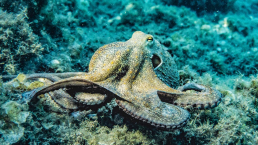
Heavy Metals and Toxicity
Chlorinated organic solvents are manufactured in large quantities and widely used in industry for degreasing fats and resins. In fact, they are among the most prevalent organic pollutants that contaminate groundwater and subsurface soils. Spills and leakages of these compounds in areas with heavy metal contamination have made difficult-to-eradicate toxic sites since heavy metals can interfere with the enzymatic and metabolic activities involved in biodegradation of these organic pollutants. In addition, the presence of the two types of contaminants at one site thus causes a synergistic negative effect.
There is therefore great interest to advance bioremediation technologies specifically for these types of co-contaminated sites. Employing bacteria and plants for this tricky and thankless job is clever on many counts; compared to non-biological approaches, bioremediation methods are usually more economical, allow easier accessibility, and importantly, minimize further negative impacts at the cleanup site
Success in Bioremediation
For bioremediation of chlorinated organic solvents to succeed however in the presence of co-contamination with heavy metals. These metals must first be identified, measured and managed to optimize detoxification efforts. Since heavy metals are found in various forms and under wide ranging environmental conditions this provides a considerable challenge at all steps. The situation is further complicated by the need to determine not merely the presence of these metals, but rather the more difficult question of their actual bioavailability on site (and thus the toxicity to remediating organisms), in order to optimally design and facilitate bioremediation processes.
In ‘Bioavailability of Heavy Metals in Soil: Impact on Microbial Biodegradation of Organic Compounds and Possible Improvement Strategies‘, Ademola Olaniran clarifies mechanisms of heavy metal toxicity, and heavy metal speciation and bioavailability which address the considerable subtlety and complexity of the critical factors involved in bioremediation for co-contaminated sites. Further, Olaniran reviews relevant improvement strategies including: metal-resistant bacteria, clay minerals, biosurfactants and rhizoremediation, among others.
About the Article
Olaniran AO, Balgobind A, Pillay B. Bioavailability of Heavy Metals in Soil: Impact on Microbial Biodegradation of Organic Compounds and Possible Improvement Strategies. Int. J. Mol. Sci.2013, 14, 10197-10228.
For related open access articles, please see heavy metals.










